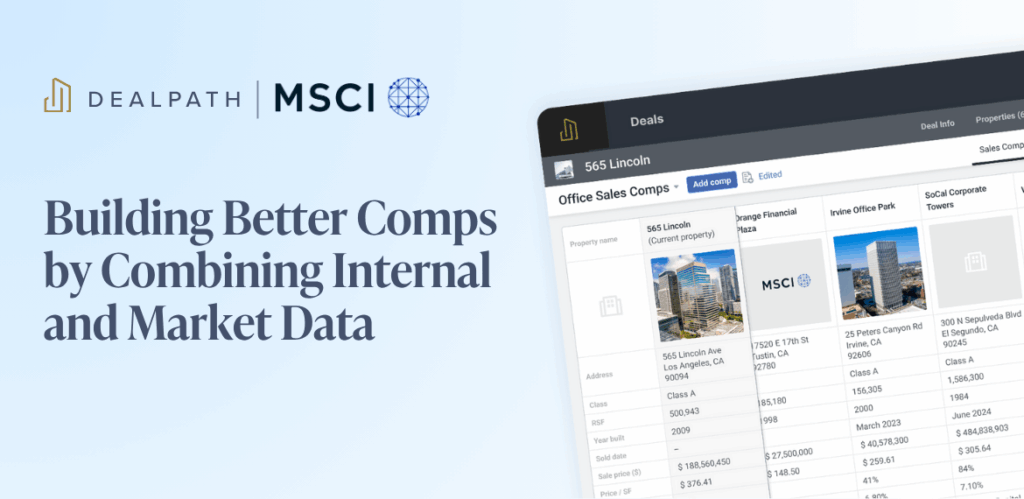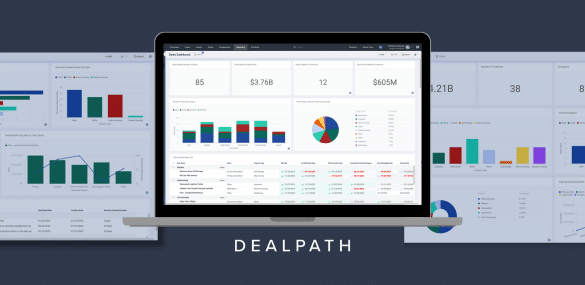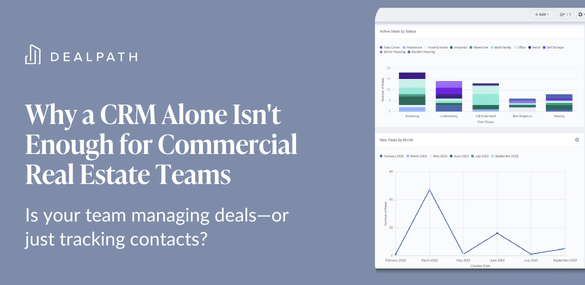As the pandemic has shined a brighter spotlight on environmental and social equity concerns, commercial real estate investors have joined a rapidly growing coalition of institutions shifting toward sustainable, community-driven practices and policies. ESG real estate considerations have become a top priority for investors at every stage in the asset lifecycle– from screening prospective acquisitions, to building development, and of course, while optimizing building energy usage in servicing tenants.
Real estate accounts for 40% of energy consumption in the U.S. and 38% of global carbon emissions. Consequently, commercial real estate investors have a significant opportunity to accelerate the ongoing transformation toward sustainability while building their portfolios. Read on to learn more about how investors can play a role in driving this change, while also tracking ESG data to achieve certifications that open doors to new opportunities.
Jump to:
- What Is ESG in Real Estate: Understanding Environmental, Social & Governance Factors
- 9 Things Investors Must Know About ESG in Real Estate
- Adopting ESG Real Estate Best Practices Paves the Way for Revenue-Driving Opportunities
- Environmental Regulations Will Only Grow More Prominent For ESG Real Estate
- Energy-Conserving & Net-Zero Carbon Buildings Will Become the New Norm
- Green, Environmentally Friendly Buildings With Low Carbon Emissions Yield Higher Rents
- Developers Are Inching Closer To Sustainable Construction Materials
- Affordable Housing Investments Offer an Opportunity to Generate Returns And Help Communities
- Building Operators Must Provide Health-Conscious Facilities
- Fostering Socially Responsible Corporate Culture, Driven By Leadership
- Setting Benchmarks and Transparently Reporting On Real Estate ESG Data-Driven Progress
What Is ESG in Real Estate: Understanding Environmental, Social & Governance Factors
ESG is a framework that allows investors to measure the impact of their real estate investments across environmental, social and governance-related factors. Achieving data-driven ESG certifications can prove valuable to investors in the form of more funding, exclusive lending opportunities, and more.
As new regulations are implemented to promote sustainable, community-oriented practices, ESG real estate considerations are paramount.
Environmental
The “E” in ESG relates to environmentally friendly practices, or monitoring how an investment impacts the planet. To adopt more environmentally friendly practices, investors must reduce building energy usage in favor of renewable energy, rely on sustainable materials and construction methods, and monitor waste disposal and water usage.
Social
The “S” in ESG describes the social impact that investments have on their communities, employees, customers, and other stakeholders. Investors can drive a more positive social impact by weighing community and employee welfare equally with financial objectives. While not as straightforward as environmental concerns, social initiatives also drive long-term revenue.
Governance
The “G” in ESG considers how corporate leadership informs, makes, and shares decisions. To comply with governance-related standards in ESG real estate, investors must adopt fair decision-making methodologies and board selection procedures, communicating them to stakeholders transparently.
9 Things Investors Must Know About ESG in Real Estate
1. Adopting ESG Real Estate Best Practices Paves the Way for Revenue-Driving Opportunities
ESG in real estate has become a critical consideration, and investment managers are highly incentivized to adopt these practices. From positive press to new investors, exclusive lending opportunities and board incentives, following ESG best practices pays dividends.
However, an investor’s word may not be enough to access these opportunities. For this reason, investors must meticulously track data to prove out their efforts’ impact, which we’ll dive into later.
2. Environmental Regulations Will Only Grow More Prominent For ESG Real Estate
Even following existing regulations, investors should continue to expect new measures aimed to further limit real estate’s carbon footprint. From government regulations to industry standards, there are a number of certifications that investors can strive toward, including:
- The Building Research Establishment Environmental Assessment Method (BREEAM): The global standard for measuring and planning sustainability across the asset lifecycle
- ENERGY STAR: An EPA tool that allows businesses to measure and track energy consumption and waste disposal, as well as their environmental impact, at the building level
- LEED (Leadership in Energy and Environmental Design): A rating system from the US Green Building Council that measures environmental performance, which, in real estate ESG, is considered a high standard.
- The Carbon Disclosure Project (CDP): An internationally recognized, non-profit organization through which investors can disclose, and subsequently reduce, carbon emissions.
- Global Real Estate Sustainability Benchmark (GRESB): A real estate ESG benchmark through which investors can measure their portfolios against industry standards based on standardized data.
Collecting data related to real estate ESG performance in a standardized, actionable format is critical to measuring your portfolio and achieving these high standards. Without visibility across your portfolio into current metrics, it’s challenging to validate existing efforts and plan future measures.
3. Energy-Conserving & Net-Zero Carbon Buildings Will Become the New Norm
Among many other regulations, one real estate ESG standard that has and will continue to become particularly prominent is energy conservation. With renewable energy more accessible, investors will be expected to dramatically reduce energy consumption and, eventually, achieve net zero carbon emissions.
Through deal management platforms, more and more investors now track carbon emissions as one real estate ESG investment criteria.
4. Green, Environmentally Friendly Buildings With Low Carbon Emissions Yield Higher Rents
Green buildings are not only more environmentally conscious, but can also generate a higher IRR for investors. Tenants with their own ESG considerations are more likely to select a building that meets this criteria, even at the price of higher rents. Because green buildings utilize more efficient energy, operating costs tend to be lower.
This trend is particularly prominent in the office asset class, but other asset classes will likely follow suit.
5. Developers Are Inching Closer To Sustainable Construction Materials
Beyond energy usage, sustainable materials are another real estate ESG consideration that investors should make to build a green portfolio. Rather than concrete and steel, which emit greenhouse gasses during production, developers are moving toward timber, which is also cheaper in some situations.
Again, creating actionable insight and reporting requires investors and developers to diligently track materials with standardized data.
6. Affordable Housing Investments Offer an Opportunity to Generate Returns And Help Communities
For investors committed to having a positive social influence, investing in affordable housing is one way to generate high returns while helping communities. Because rents have increased amidst the pandemic and inflation, affordable housing can prove quite profitable.
Beyond an opportunity to generate high returns in city centers with lasting appeal, affordable housing can also offer investors tax credits.
L+M Development Partners, a multifamily developer that relies on Dealpath, specializes in the affordable housing market.
7. Building Operators Must Provide Health-Conscious Facilities
For landlords, fostering a safe, healthy building for occupants is a top ESG priority. As building health metrics become more measurable, asset managers are making strides to improve air ventilation, filtration, hygiene and light, among many other considerations. Other amenities like exercise and healthy food options also encourage a proper diet, lifestyle changes and positive mental health.
One way that asset managers can implement these changes is tracking building metrics by occupant. For example, does the average occupant have sufficient space? Auditing these metrics and optimizing spaces is key to achieving the right ESG real estate results.
8. Fostering Socially Responsible Corporate Culture, Driven By Leadership
Another driving force behind ESG real estate standards is corporate social responsibility, or the idea that firm leadership must foster a culture aligned to its values. Sharing corporate values allows a firm’s employees to rally around a central mission, with full awareness of those goals. It’s also crucial for firms to implement policies toward achieving optimal equity, diversity and inclusion. To develop the strongest relationship with all stakeholders, firms are creating more transparency in the ways that they consider vendors, make decisions and measure results.
In taking steps toward heightened social responsibility, your firm can build a workforce that rallies around shared goals, preventing turbulence in the face of setbacks and obstacles.
9. Setting Benchmarks and Transparently Reporting On Real Estate ESG Data-Driven Progress
Making strides toward improved real estate ESG policies is only the first milestone; the next is routinely measuring progress, and reporting to stakeholders. Measuring progress against internally set benchmarks, as well as the industry benchmarks above, is critical. Doing so, however, requires a deal management platform like Dealpath.
Tracking standardized data about real estate ESG metrics ensures that you can make incremental progress and communicate that progress to stakeholders. Without a deal management solution that tracks data at the deal level, cobbling together data–with confidence in its accuracy–can be challenging.
Learn more about why it’s time for a deal management platform by downloading our free white paper. In it, you’ll learn why the leading firms have adopted purpose-built technology to standardize deal flow for efficient revenue growth.
Download Free White Paper


